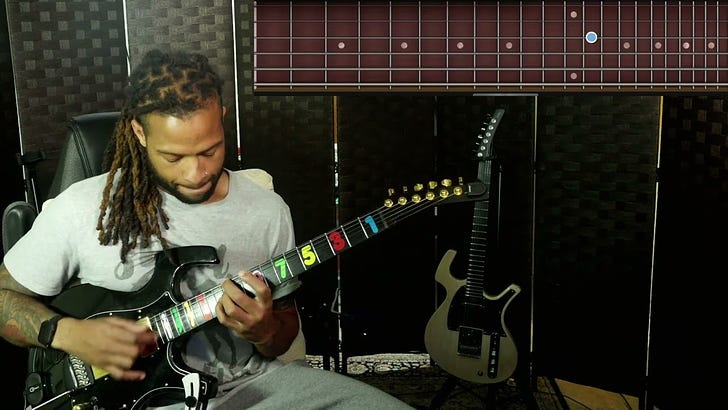The Beauty of Walking Bass Rhythm
Rhythm guitar is very underrated. We should correct that together.
The Practice Room
I, of course, want to promote my new Walking Bass Course that is now available for purchase, HOWEVER, I can’t just self-promote with nothing in it for you.
Walking bass lines can be applied in just about every genre, but they are incredible for blues. 1) As a guitarist it adds a bit of variety to the normal cowboy chords and so on, 2) it is an easy way to separate your guitar into two voices (the chords and the bass line), and 3) it is just darn fun and EASY to learn. We learn a lot about chords, melodic movement, and the capacity for the guitar to be like a piano with this style. Now, there are of course guitarists like Tommy Emmanuel who really turn their guitars into pianos. Amazing to listen to, but that takes a lot of effort to develop and it’s a style I personally am not interested in learning. Walking bass is perhaps the easiest way to get that effect.
Before we get to a few other examples of great walking bass performances, here’s a sample performance from the course. Other samples are on the site.
Let’s look at two of my favorite walking bass performances of all time. And keep in mind that my course is the best starting point to eventually get to that level. I checked long and hard and couldn’t find anything like it -I kind of made it first to teach myself.
Both of these examples come from one of my favorite jazz guitarists, Jonathan Kriesberg. The first is the jazz standard Caravan. No, the whole performance isn’t comprised of walking bass, but the bridge has an amazing walking bass sequence.
This second video is of a jazz blues. You’ll notice that Jonathan has a lot of different advanced walking bass variations during his accompaniment of the other soloist. My course also focuses on Jazz blues, just like this video, but I do make it a lot easier while still giving you a lot of advanced ideas to work with. And this is NOT JUST FOR JAZZ!
The Weekly Summary
If you care about using Youtube as a learning tool, I think you will like the podcast episodes this week. The first discusses why youtube as a platform is horrible for learning in general.
In part 2, I discuss schema theory, how to learn, and why many great guitar players aren’t great teachers. Please ignore the clickbait title, I promise the lesson itself is an important one!
Finally, in part 3 I give an actual template for using youtube as a learning tool.
Of course, we also have our standard gear review of the Rivolta Mondata XVII, and I also compare it to other brands in podcast form at the end.




